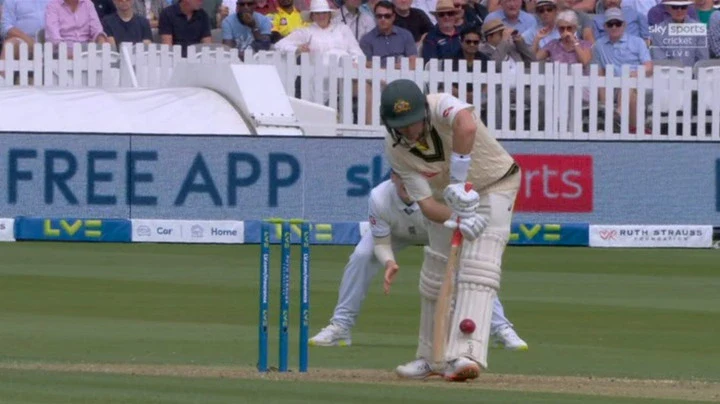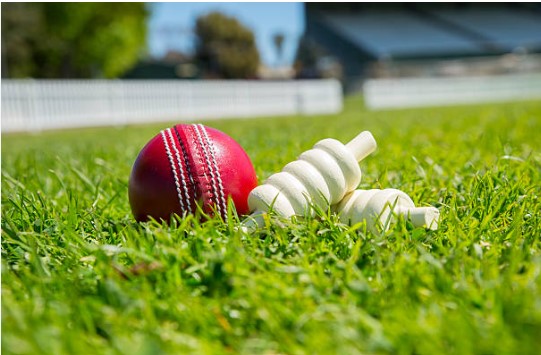Mastering Cricket’s LBW Rule: Full Form, Laws, and Real-Life Examples
Cricket is a game of skill, strategy, and rules, and one of the most talked-about rules is LBW. If you’ve ever wondered, “What does LBW mean?” or struggled to understand its complexities, this blog has got you covered. LBW, short for Leg Before Wicket, is a rule that can make or break a match. Understanding LBW in cricket is essential for players, umpires, and fans alike. In this post, we’ll simplify the LBW rules, explain its full form, and look at real-life examples to bring clarity to this crucial aspect of cricket.
What Is LBW in Cricket?
The term LBW stands for Leg Before Wicket. It refers to a method of dismissal where a batsman is ruled out if the ball strikes any part of their body (except the hand holding the bat) and meets specific conditions outlined in cricket’s laws. This rule ensures fair play by preventing the batsman from unfairly using their body to block the ball from hitting the stumps.
To fully grasp LBW in cricket, let’s break it down step by step, covering the key conditions and real-world implications.
Understanding the LBW Rules
The LBW rule is governed by Law 36 of the Marylebone Cricket Club (MCC). Here are the primary conditions for an LBW dismissal:
- Ball Pitching
- The ball must pitch in line with the stumps or on the off-side of the batsman.
- If the ball pitches outside the leg stump, LBW cannot be given.
- Ball’s Impact
- The ball must hit the batsman’s body (usually the leg) in line with the stumps or on the off-side if the batsman is not offering a shot.
- If the impact occurs outside the line of the off-stump and the batsman attempts a genuine shot, they are not out.
- Likelihood of Hitting the Stumps
- The umpire must be satisfied that the ball would have gone on to hit the stumps if it had not struck the batsman.
- Intent to Play a Shot
- If the batsman doesn’t attempt to play the ball and is struck in line with the stumps, the chances of being given out increase significantly.
Why Is the LBW Rule Important?
The LBW rule adds fairness to the game by discouraging batsmen from using their legs as a second line of defense. Without it, players could simply block the ball with their pads and make scoring or dismissals nearly impossible.
LBW also makes cricket more exciting. Every LBW appeal brings drama, often requiring the umpire’s judgment and sometimes even the Decision Review System (DRS) to resolve close calls.
Real-Life Examples of LBW Dismissals
- Sachin Tendulkar vs. Shane Warne
One of the most iconic LBW dismissals occurred during the 1998 test series when Warne’s sharp turn trapped Tendulkar in front of the stumps. This moment highlighted the importance of footwork in countering spin. - Ben Stokes vs. Nathan Lyon (2019 Ashes)
A controversial LBW call during this match was overturned by DRS, showcasing the role of technology in modern cricket. - Wasim Akram’s Masterclass
Akram’s inswinging deliveries often led to batsmen being trapped LBW, making him one of the most feared bowlers in cricket history.
The Role of Technology in LBW Decisions
Modern cricket heavily relies on technology for LBW decisions. Key tools include:
- Hawk-Eye: Tracks the ball’s trajectory to determine if it would have hit the stumps.
- UltraEdge: Detects edges when the ball hits the bat or pad.
- Ball Tracking: Ensures accurate decisions regarding the ball’s line and impact.
While technology has reduced errors, LBW decisions remain one of the most debated aspects of the game.
Common Misconceptions About LBW
- “LBW Only Happens When the Ball Hits the Leg”
- False. LBW applies to any part of the body, except the hand holding the bat.
- “If the Ball Pitches Outside Leg, It’s Always Not Out”
- True. The ball must pitch in line or outside off-stump for LBW to be considered.
- “The Umpire Must Be 100% Sure”
- While certainty is preferred, umpires often rely on DRS for marginal calls.
Key Statistics About LBW in Cricket
- Frequency: On average, 14% of dismissals in international cricket are LBW.
- Bowlers’ Advantage: Fast bowlers account for about 60% of LBW dismissals, while spinners contribute the remaining 40%.
- Historic Record: Muttiah Muralitharan holds the record for the most LBW dismissals in test cricket (167).
How to Avoid Being Dismissed LBW
Batsmen can reduce the chances of getting out LBW by following these tips:
- Use Proper Footwork: Always get to the pitch of the ball to prevent it from striking your pad.
- Play Straight: Avoid cross-batted shots to balls aimed at the stumps.
- Read the Bowler: Anticipate inswingers or spinners’ angles to adjust your stance.
FAQs About LBW in Cricket
Who decides an LBW dismissal?
The on-field umpire makes the initial decision, but players can challenge it using DRS if available.
What is the LBW full form in cricket?
LBW stands for Leg Before Wicket.
Why can’t LBW be given if the ball pitches outside leg-stump?
This rule prevents bowlers from exploiting an unfair advantage against the batsman.
How does DRS help in LBW decisions?
DRS uses tools like Hawk-Eye and UltraEdge to verify if the ball would hit the stumps, ensuring accurate decisions.
Will LBW rules change in the future?
While the core principles of LBW are unlikely to change, advancements in technology may make decisions even more accurate.
Conclusion
Mastering the LBW rule is essential for anyone looking to understand or play cricket effectively. From its full form to the detailed laws and real-life examples, LBW remains a critical part of the game. Whether you’re a fan or a player, knowing these rules adds depth to your cricketing experience.
LBW may seem complex at first, but with this guide, you’re now equipped to appreciate its role in shaping one of the world’s most beloved sports.














Post Comment